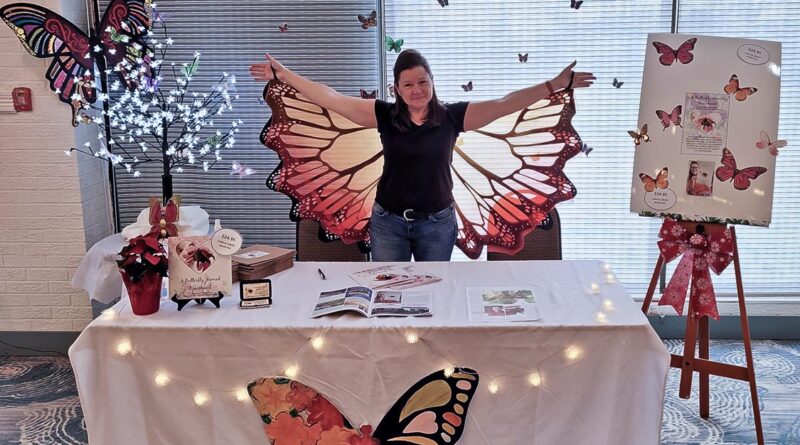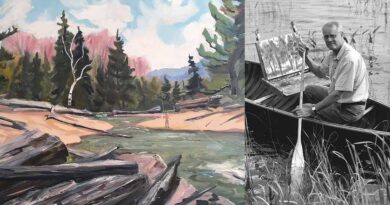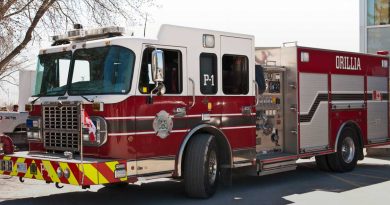This Week In Art/Culture/Entertainment
By John Swartz
We have a new author in town. Krista Holmes-Storey has written a children’s book, A Butterfly Named Braveheart, which has sold to readers around the world. The 50 page book is illustrated with lots of Krista’s own photos.
She also created a video teaser to give potential buyers a taste of what the book is about.

It all started when she noticed a butterfly crawling across her lawn. She discovered it had malformed wings and couldn’t fly, so she scooped it up and brought it into her house and fed it. She chronicled the story on her Facebook page, and gathered many interested followers.
When Krista was laid off from her job as Manager of Arts and Culture for the Town of Gravenhurst because of the pandemic there were suggestions from her friends of what to do with her time.
“Everybody said good, now you have time to write your book. I said, “yeah, but I have no money.” Publishing a book is not cheap,” Krista said.
Well, it was published in October and the 350 copies she had sold out. Children could likely read it on their own, but the intent is to have it read to them, kind of like in The Princess Bride.
“There are a few big words in the book, but honestly those are words they should be learning and if they don’t know then it creates a conversation and those conversations are really important as well because then it becomes a family discussion,” she said. “There’s lots of scientific information in it, but it’s still done in a story format.”
“To me it’s of varying degrees of readability. What I had in mind was whenever we used go visit my parents the number one thing my kids wanted my mom to do was to read them a bedtime story. That’s what I had in mind, a grandparent reading to a grandchild.”
Word of the story spread before there was a book.
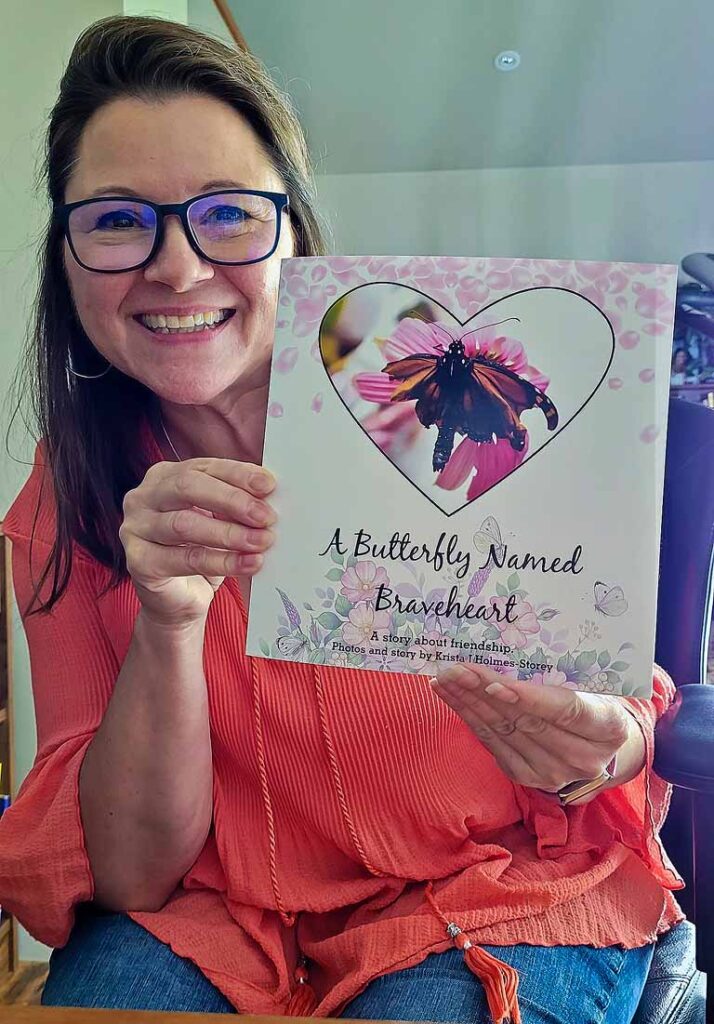
“The reason I was in such a rush to get something created, somebody from the Barrie Public Library had heard about this story and said, “I want you to do a virtual reading.” Well, I didn’t even have a book yet. I hadn’t even written it yet,” she said.
Then a friend made a connection which created a lot of interest.
“A childhood friend works at the Toronto Star and she ordered a book and she went into her editor’s office and said, “You need to do a story on this.” She followed along with Braveheart’s story online. She loved the story,” Krista said. “This beautiful Toronto Star article got the attention of people all over. It went viral.”
To a smartass like me, the obvious question about the name had to be said.
“Am I a Mel Gibson fan? Yes, of course I am. I think that’s where I perhaps got the sense of strength and resilience and fighting back and so on, and the fact he’s (the butterfly) a warrior and feisty,” Krista said. She said she often names the insects she finds in her garden, usually beginning with the letter B or M.
“The name rolled off my tongue and it was Braveheart the butterfly.”
The story has a sad ending.
“The whole story is sad at the end. Braveheart dies, but that’s life. It helps children navigate the subject of death and dying. Pets don’t live forever.”
“It’s leaving it in the hands of everyone else to think of Braveheart; to plant things, think of your pollinators, that’s it’s important we preserve habitats and pay attention to what’s around us,”
“I also tried to build in the lessons of we’re not all the same. Some people are born different. It is about kindness and support and resilience and perseverance. There are a lot of lessons in the book I really focused on,” she said.
Bravehert lived 83 days. Most Monarchs live 2 to 4 weeks, some live a lot longer.
“There are several generations of Monarchs throughout the year. Braveheart’s generation was the later generation that could live up to 6 months and they’re the ones that travel south.”
So how far afield is the book finding its way to readers?
“It’s gone to Japan, they’ve gone to the U.K., They been as far south as Florida, they are in just about every province across Canada, they’ve certainly travelled far,” she said.
“Somebody was going to send one to people they knew in Mexico,” Krista said. “They wanted to make sure Braveheart made it to Mexico (where Monarchs, and Braveheart’s cohort, migrate to), that was their message to me,” adding many people who order the book also tell her why they are buying the book. “I could write a book just on all the stories people tell me.”
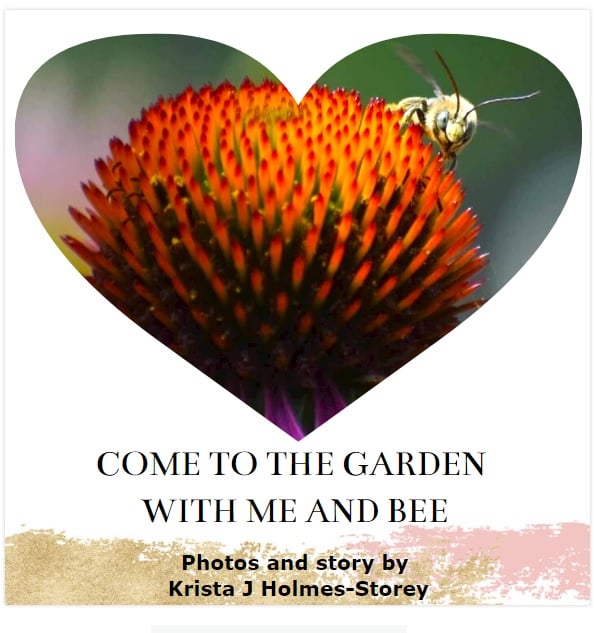
But, that book will have to wait because Krista has another book she’s working on.
“I am working on the next book and it’s utilizing my photography. I love to stand in the middle of the garden and take pictures of little faces of grasshoppers and bees and moths, butterflies and so on. It’s called Come To The Garden With Me and Bee. It’s going to be a rhyming book.”
You can order a cop online and even though Manticore Books sold out their supply, a new one is on its way.
Musicians Can’t Work Again, Now What?
Steven Henry took to his Facebook page two weeks ago and resurrected his 2-hour-long, Saturday evening concerts. He thinks he’ll be doing that for a while.
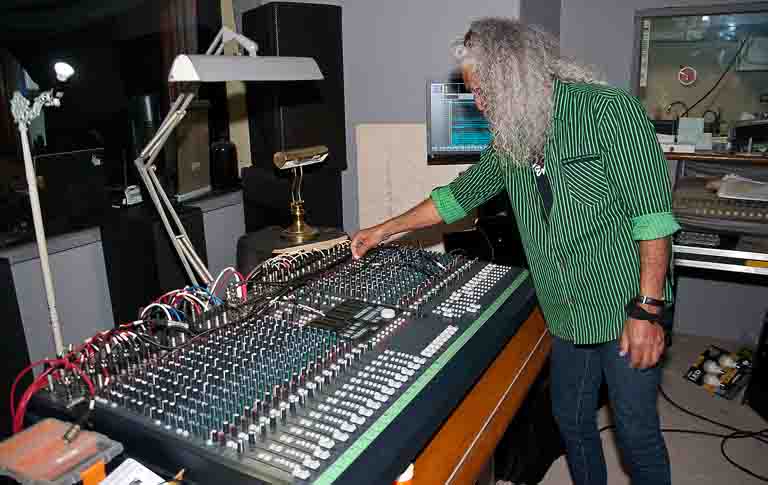
“It will probably run until summertime; April, May, maybe June,” Steven said. “I’m just going to sort of play it by ear and see what happens.”
The shows start at 8 p.m. and as a live stream viewers can comment and make requests in real time. Steven has such a breadth of tunes stored away he can usually accommodate.
“Well, I try,” he said. Every once in a while someone asks him to do one he doesn’t know. Like last week when someone asked for anything by Gordon Lightfoot. Steve’s response was he didn’t know any Lightfoot tunes. Steve always takes a short coffee mug refilling break in the middle of his show and while doing so downloaded the lyrics and then proceeded to sing The Wreck of the Edmund Fitzgerald, one of Gord’s easier tunes to master (don’t believe everything you read). The thing about Steven is he’s played so much music he’s likely forgotten more than he remembers, but it also allows him to quickly come up with some guitar parts, sometimes on the fly.
“I just had to put it in a key where I could sing it. Everything he sings is too low for me.”

Joe Huron did the same thing with his Sunday, noon-time, concerts on Facebook. He did them throughout the last restriction period and was ready to go. He thinks he’ll be back to work sooner than later.
“Tentatively we’ll be back at the British Arms (Barrie) on January 30th, but who knows what they are going to announce,” Joe said.
The conversations with Steven and Joe gave me an idea to write something other musicians might find useful if they are thinking about how to keep playing for audiences. So here’s some examples of what Steven and Joe are doing along with some tips I’ve learned over the years about making video.
In Joe’s case he kept things simple.
“I’m not using my computer. I’m totally using my phone,” he said. “I just use a real simple set up. I have a little microphone I hook into the phone (which he uses to pick up his guitar amp and his voice). It seems to get a little bit better quality than just the phone (mic) It sounds pretty good I think.”
That mic is called an SF666, It’s cheap, as in under $20, from China, and surprisingly does a pretty good job transferring your voice into bits and bytes.
A lot of videos I’ve seen have been done with just an iPhone or Android, with varying degrees of success. The ultimate consideration should be the sound. Some, like Joe, are primarily instrumentalists and can get away with it, but you have to test it. Both Youtube and Facebook have functions to run tests by using private settings before you go public to see if things are sounding good – and looking good.
Where I come from there was a lot of emphasis on the look part and little consideration on the “how’s it sounding?” part. I went to Rogers with a background in music and good familiarity of sound production gear and ended up helping other producers with their sound issues. Of course the larger the production house, the more likely they have people who specialize in the sound aspect, but you’d be surprised just how many TV operations don’t have dedicated sound people.
Steven originates from his Warminster recording studio, so he has a battery of sound processing gear he uses before he sends it to the internet. You should probably do the same, and you can do it with some cheap, or free software and output to your phone (if that’s what you are using). You could also get a small mixing board, Yamaha and Behringer, make small multi-channel boards. Mic each thing, voice, guitar amp, and instrument, do a mix, some EQ’ing. Use mics with USB connectors to get them into your computer. That means you’ll likely have to buy a USB hub, or better a USB controller for audio.
You can process the sound in your computer in a sound processing app and then sync the audio in a video production app.
There are a few free to use video editing/production apps. A popular one is DaVinci Resolve. There also is a paid version and it’s being used in a lot of professional studios, instead of the more costly Adobe Premier, and the even more costly AVID system. Resolve can be used to live stream and comes with a robust audio processing component. There is also a dedicated live streaming app called OBS many people use. Its open source, which means free, and people have developed plugins for the app.
In both cases you can use more than one camera and that’s another thing to consider, phone or camera. Many people are using lower cost consumer grade DSLR cameras, and there are some made with bloggers and online video production in mind. Bells and whistles aside, the electronics in most cameras are of equal technological standard so the thing that counts, the picture is going to be pretty good no matter what camera or brand you use. For this purpose don’t be seduced by a higher price tag. It’s all about the lens and the basic features you need. If you go with a DSLR, put at least half you budget into a lens.
If you are going for two or three cameras there are two things to consider. Don’t ignore Logitech webcams. They have them in 4K now, and the HD cameras can be had for under $100. Gopro cameras are also widely used, with the benefit you can record in the camera as well. About standards, it really doesn’t matter what brand or model, HD means HD, it’s a standard and one brand is not better than another, same for 4k. All the differences between models and brands are wrapped up in bells and whistles. If you are using more than one camera you definitely need one of the video apps mentioned above. Many Youtubers are using these and you can’t tell the difference from the others.
The second consideration is, if you use multi-cams, you need someone to operate the switching software while you are performing, preferably someone who knows your music so they select the right camera at the right time. Uploading is important to know about. Youtube converts everything to the 720p standard, so uploading in 1080p or 4k is going to get compressed. When you watch a video labelled 4k, it doesn’t mean it’s being played in 4k. Same for the audio, so watch your levels and don’t embed it with the video recording or stream too hot. If you can, use some compression at the source, but go easy on it. In Adobe Premier there is a table of output choices and standards and one of them is Youtube HD; the array of settings is done for you and this is likely the case with Resolve and other video apps, though I can’t say for sure.
Another very important aspect is the setting, where you are originating your concert. Some settings will affect the sound quality, so make a recording in it and listen to it. Room acoustics are a factor, but the HVAC noise we all habitually filter out and ignore will be in your recording or live performance. Check your meters, but trust your ears. The main thing is the look. Again, record something with you in the frame performing and look at the background. What shouldn’t be there? What should be there to make visually dead spaces look more interesting? Is the camera at the right height and distance to make you look good? You’d be surprised how lowering or raising a camera affects how you look. What does the lighting do?
Stay away from windows unless they are in front of you and behind the camera. You don’t want a huge light source, like the sun, in any part of your shot or hitting only part of your set; the auto iris functions almost everybody relies on, unless they know how to fly on manual settings, will clamp down on the brightness according to the sun; man has yet to make a lamp as equally powerful as the sun. That said, use the window light if it’s in front of you and steal lights from all over the house and use them, you want as much light on you and not the entirety of what is in the frame, those are two different things and should be lit separately. Don’t worry too much about different coloured lights (yellow vs. blue tint) the auto white balance in cameras these days tends to take care of that. If yours doesn’t then try not to mix light colour temperatures in extremes (yellow and blue) or light different parts of the set (not you) with the different tints.
You can certainly do some research on cameras online. Two of the most popular channels on the internet for camera info are by Canadians, Gerald Undone and Camera Conspiracies. Here’s a list of other videos about online audio.
You can certainly buy all you need at Best Buy, but if I was jumping in I’d be hitting up Vistek in Toronto, or Henry’s in Barrie where you’ll find staff who know what they are talking about when it comes to video for the internet, be able to put an entire package together to fit your budget, and some of them will also be musicians too.
![]()



![]()
The Shorts
- Zachary Lucky had to cancel a bunch of shows, including two he was doing here in Orillia. On Jaunary 15th he’s doing a concert you can watch on Bandcamp. Get tickets online and the show starts at 8 p.m. In addition to access to the concert for $10, you also get an HQ download of his new album, Songs For Hard Times
- The City has wall space for art at the Orillia Recreation Centre and it’s time to change what’s been hanging around. They are asking artists to submit ideas for new art on the theme of The Mechanics of Life. You can find details about how to get your art included here.
- Did you get a season ticket here for the Orillia Concert Association’s excellent series? It’s only $70 and I dare you to find a better deal to see three concerts of this type anywhere. The next and first in person concert of the series is February 20 with Sonic Escape (Maria Millar, violin and Shawn Wyckoff, flute) at St. Andrew’s, followed by the Hog Town Brass March 27 at the Opera House. The final concert is May 1 with the Toronto All Star Big Band.
- You can still catch the Orillia Regional Arts and Heritage Awards program on OMAH’s Youtube channel.
- Hibernation Arts is open again after a holiday season break. There is no featured artist at the moment, but the Orillia Fine Arts Association section of wall space has been updated as has the Zephyr Gallery section. Peter Street Fine Arts still has the 6×6 show up and OMAH is closed at least until the end of the month.
CORRECTION: Krista’s job title has been corrected.
(Photos by Swartz – SUNonline/Orillia and Images Supplied) Main: Krista Holmes-Storey at the 5 Sisters Craft Collective show.

